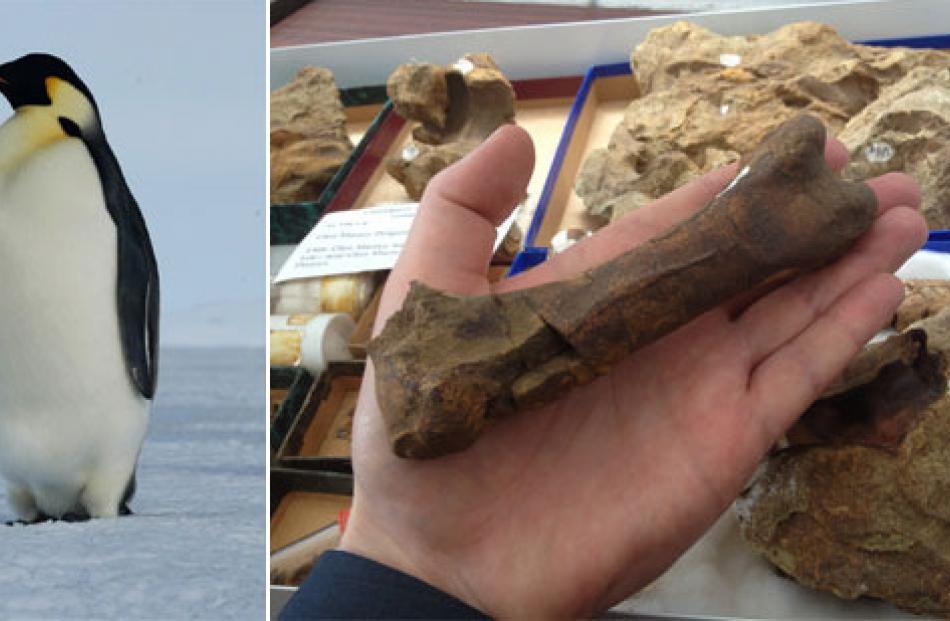A giant ancient penguin far taller than any species alive today has been described for the first time after its fossil remains sat for decades inside an Auckland storage shed.
The fossilised bones of the penguin, yet to be named, were found in North Waikato in 1971, but had been largely ignored until recently rediscovered by Massey University zoologist Dr Daniel Thomas.
The unusual features of the 28-million-year-old specimen have convinced Dr Thomas it is a new species, and the first of its kind to be discovered in the North Island.
Dr Thomas estimates the bird would have stood at 1.3m -- slightly taller than the ancient Kairuku penguin discovered in 2012, and about 30cm taller than today's largest penguin, the emperor.
"I imagine an emperor would have run away scared," said Dr Thomas, when asked how the two birds would compare.
It was likely the bird would have been a deep-diving penguin, like the emperor, and been preyed upon by sharks and dolphins.
He learned about the remains shortly after returning to New Zealand from overseas and searching through old research papers.
Because there was little to compare the remains against when they were discovered, the specimens were not fully classified and were eventually shelved in a Tamaki storage shed operated by the University of Auckland.
"It turned out there was a raft of other specimens as well -- it was a treasure trove of some really incredible stuff."
It was when he came upon the right leg bone of the penguin -- enough to immediately tell him much about the bird -- that the significance of the discovery struck him. "I couldn't stop grinning, to be honest ... I was looking at this thing and thinking, how has no one worked on this for 40 years?"
Dr Thomas had the bones 3-D-scanned and sent the prints to colleague Dr Dan Ksepka in the United States for further analysis.
Features in the bones of the fossil penguin were different from any of the 50 discovered so far, and Dr Thomas and his colleagues now have only to confirm its status as a juvenile or adult before they can prepare a paper for peer review.
The find was especially exciting for Dr Thomas as the fossil was recovered near where he grew up, and he sees potential for many more new discoveries to be made in the North Island.
He is keen to hear from Waikato and King Country farmers with limestone quarries who could help with the hunt.
By Jamie Morton of the NZ Herald













